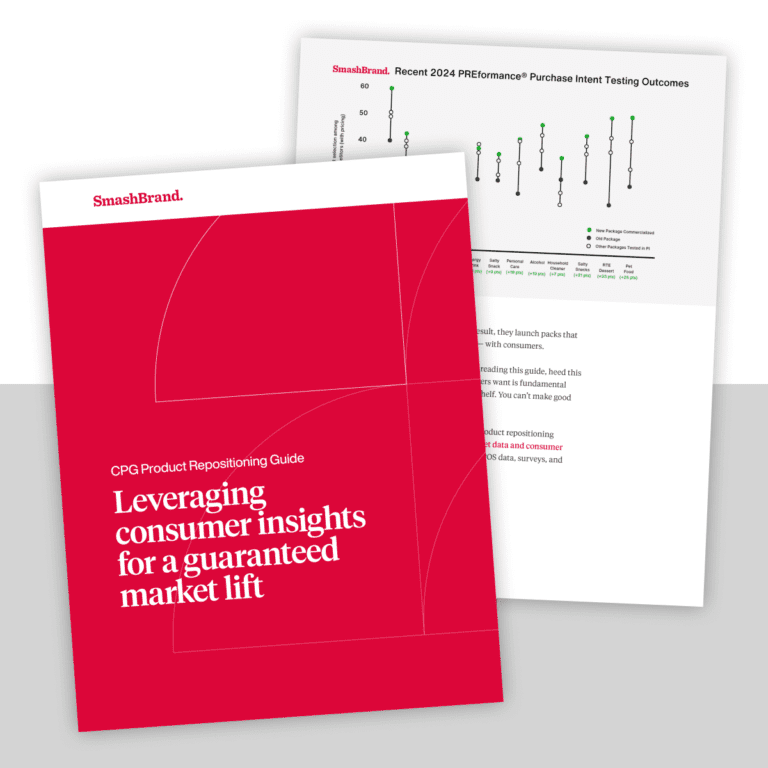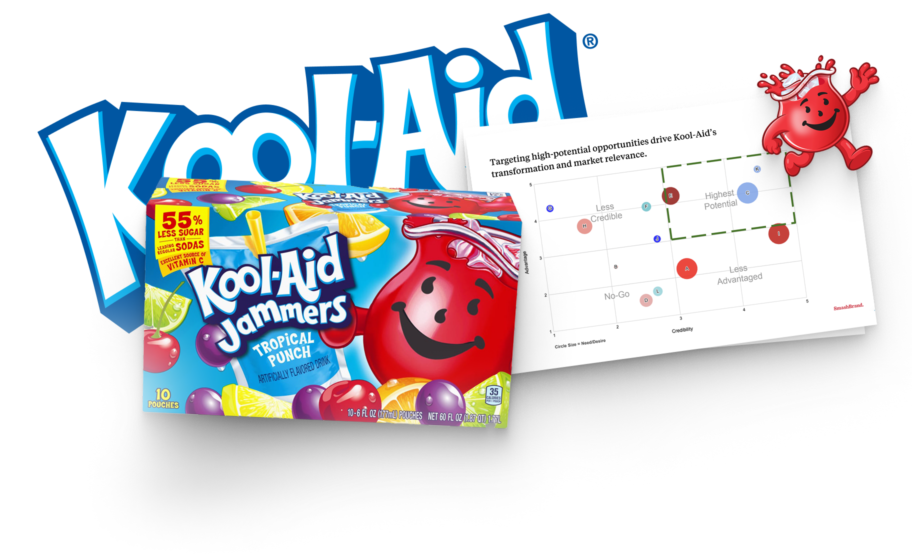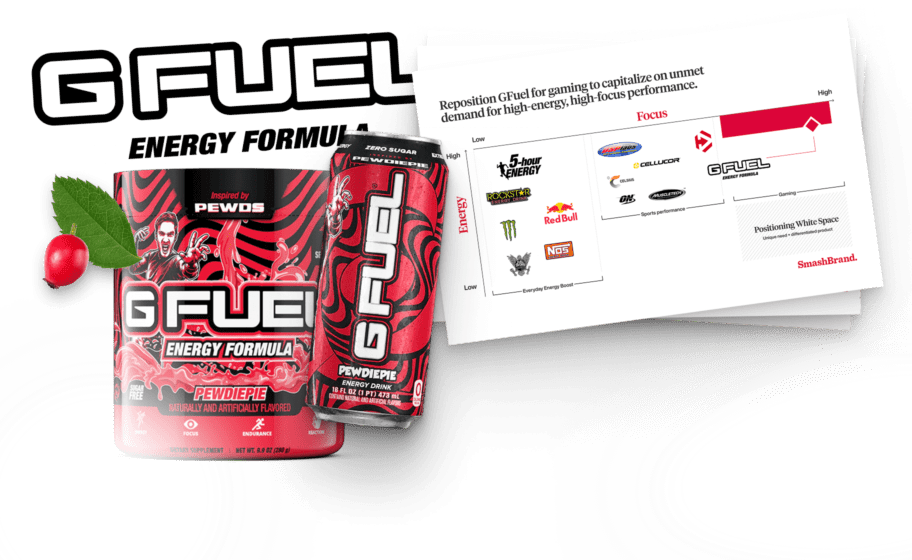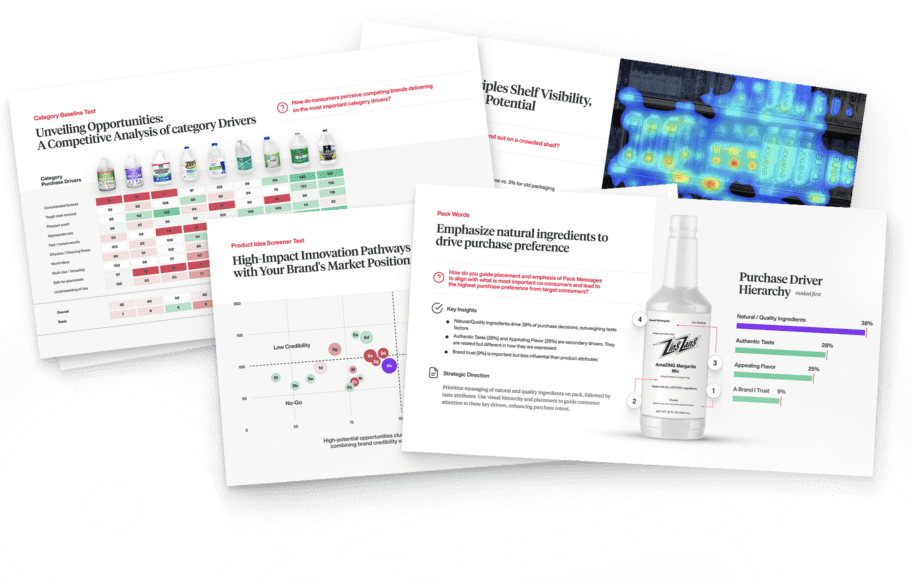In the CPG industry, tracking the right metrics is essential for brand success. Identifying and monitoring the right CPG KPIs informs your brand strategy by highlighting strengths, weaknesses, and opportunities for growth.
These indicators give CPG marketers clear insight into marketing performance and supply chain efficiency. When powered by strong CPG data analytics, they guide informed decisions that support revenue growth, improve customer retention, and uncover optimization gaps.
Understanding and applying KPIs, from marketing efforts to inventory movement, enables packaging design companies to align creative execution with what drives purchase. Whether it’s through market research or agentic AI tools, the goal remains the same: deliver measurable outcomes with every move.
What are CPG KPIs?
Understanding what CPG KPIs are is the starting point. These key metrics offer essential insights into marketing performance and supply chain efficiency.
For any CPG brand strategy agency, these indicators are non-negotiable. They’re used to refine marketing efforts, optimize retail analytics, and ultimately boost revenue. From tracking inventory levels to measuring conversion rate, these KPIs support better decisions across the board.
In supply chain management, they help monitor sales volume, identify bottlenecks, and improve operational efficiency. Strong KPIs also play a critical role in enhancing customer retention by revealing what drives repeat purchases.
And when comparing performance models like CPG vs FMCG, understanding the right supply chain KPIs and retail data is key to staying competitive.
Why are CPG KPIs important?
CPG KPIs are essential tools for driving brand growth and increasing revenue. They allow brands to monitor their performance promptly through real-time, weekly, monthly, and quarterly reporting.
Performance Evaluation: Brand performance indicators give CPG measurement real value. Agencies use this data to evaluate campaign performance and optimize CPG branding strategies. KPIs also track the impact of packaging design, helping CPG packaging design agencies create solutions that drive shelf performance, not just visual appeal.
Data-Driven Decision Making: CPG KPIs support more innovative branding and marketing moves. Real-time insights into product demand and market behavior allow brands to launch campaigns that connect. When data drives your decisions, your brand has a better shot at building meaningful brand affinity.
Goal Alignment: Brand KPIs help align company goals with market trends. By identifying gaps and weaknesses, brands can improve strategies, increase competitive advantage, and reinforce quality management for CPG operations.
Types of CPG KPIs.
CPG KPIs fall into distinct categories based on what they measure. Each type reveals something critical about brand health, growth potential, and operational efficiency. Here’s a breakdown of sales and revenue-focused indicators and their significance.
Sales and revenue metrics.
These metrics help evaluate sales velocity, profitability, and market position, core to any performance tuning for consumer packaged goods.
- Gross Sales: The total sales before deducting marketing or production costs. A proper gauge of sales volume. It helps assess product-level performance and packaging performance metrics.
- Net Sales: After subtracting costs, net sales reveal which products generate real profit. This metric helps uncover consumer preferences and measure quality in consumer packaged goods.
- Market Share: The percentage of total sales a brand owns within its category. Tracking market share supports opportunity assessment for a CPG manufacturer and benchmarks brand growth against competitors.
Marketing Metrics
Beyond sales and revenue, these marketing KPIs help CPG marketers evaluate campaign performance and adapt strategies based on real-time data and emerging trends.
- Customer Acquisition Cost (CAC): CAC measures the total investment needed to acquire a new customer. This metric drives intelligent, data-backed decision-making and allows for precision in CPG omnichannel efforts, especially when monitored through platforms like Google Analytics.
- Return on Advertising Spend (ROAS): ROAS focuses on the return generated per advertising dollar spent. For CPG branding agencies, this is a key indicator of whether their marketing efforts are driving meaningful business outcomes.
- Brand Awareness: These KPIs track consumer engagement and exposure, offering valuable CPG insights into how well your brand connects across channels. They help evaluate whether a campaign truly increases visibility and brand preference.
- Trade Spend Efficiency: This metric assesses how effectively a CPG manufacturer invests in promotions like discounts or coupons to boost demand. When combined with testing for CPG brands, it offers a complete view of what’s driving lift and what’s not.
Together, these metrics help refine the CPG experience, guide CPG innovation, and ensure that every marketing dollar contributes to growth.
Supply Chain Metrics
Supply chain KPIs help CPG manufacturers respond to market behavior and streamline production. These metrics uncover opportunities to boost efficiency, improve customer experience, and ensure CPG brands stay competitive across channels.
- On-Time Delivery (OTD): A core metric for measuring supply chain efficiency. OTD compares actual delivery dates with expected timelines, directly impacting customer satisfaction in both retail and CPG e-commerce environments.
- Inventory Turnover: This calculates how often inventory is sold and replenished. A high turnover rate reflects strong sales and efficient inventory flow, key to supporting fast-moving CPG marketing campaigns.
- Perfect Order Fulfillment: This metric measures order accuracy and quality across touchpoints, delivery timing, product condition, packaging, and documentation, ensuring a consistent brand experience across CPG omnichannel strategies.
- Distribution: Tracks delivery volume and speed to retail partners. High performance in this area reflects strong distribution networks and effective execution of your CPG pricing strategy across store locations.
- Retailer Adherence: Assesses how well retail partners align with your planogram, promotions, and pricing. High adherence indicates tight retail collaboration, essential for executing CPG packaging design and in-store marketing plans.
- Product Quality: One of the most influential metrics for brand loyalty. This KPI monitors post-sale performance using consumer reviews and complaints, providing actionable CPG insights that fuel future innovation and retention.
Customer Metrics
Customer metrics help to determine the success of a brand’s product in consumer retention. A CPG manufacturer can easily align its production with customer needs by analyzing these metrics.
- Customer Satisfaction (CSAT): It measures customer feedback through surveys and input within the CPG industry. A high CSAT score indicates customers’ satisfaction with the company’s products and services.
- Customer Lifetime Value (CLTV): It considers the customer’s purchasing habits, loyalty, and the cost of acquiring and retaining them. A high CLTV indicates effectively achieving and retaining valuable customers.
- Customer Loyalty: It tracks customer behavior, such as repeat purchases, referrals, and advocacy. A high level of customer loyalty indicates that customers are satisfied with the company’s products and services.
- Net Promoter Score (NPS): NPS measures the likelihood of customers recommending a company or its products to others. It is a valuable indicator of customer loyalty and advocacy, helping companies gauge their brand’s reputation and identify promoters and detractors.
Setting CPG KPIs
Setting key performance indicators for consumer goods based on CPG data involves the following steps.
Define your Objectives
Having clear objectives is essential for obtaining actionable insight. A CPG company should establish specific and achievable targets to enhance sales, streamline the supply chain, or enhance customer satisfaction.
Identify Relevant Metrics
Once the goals and objectives are defined, the next step is to identify relevant metrics. Depending on the company’s goals, these can be sales and revenue, supply chain, customer, or marketing metrics.
Set Realistic Targets
Setting realistic targets allows companies to enhance their performance continuously and achieve their desired goals within a specified time frame. For instance, a CPG packaging design agency can divide its main goal into several challenging yet achievable targets.
Monitoring And Analyzing CPG KPIs
Setting CPG KPIs is only one part of the story. These KPIs require constant monitoring and analysis to extract actionable insights from the data obtained. Here’s how to track and analyze them:
Utilizing Data Analytics Tools
There are several data analytics tools available for monitoring and analyzing CPG KPIs. For example, Google Analytics allows ecommerce for CPG brands to track their performance. It provides clear insights into the demographics, interests, and other valuable metrics.
Regularly Review And Update Metrics
Companies must regularly track and review various KPIs to analyze the market trends and consumer behavior. It helps to find gaps in the marketing and retail strategies. Updating metrics helps companies align goals and stay relevant in the market.
Benchmark Against Industry Standards
After getting valuable data from various KPIs, it is essential to check the company’s performance against industry standards and competitors. It allows CPG marketers to find new opportunities for improvement.
Challenges In Measuring CPG KPIs
There are several challenges when measuring CPG KPIs and obtaining meaningful data. Some of these challenges are as follows:
Data Accuracy and Availability
Key performance indicators are all about data. Only accurate or complete data can provide actionable insights. Therefore, check data from various sources for integrity and completeness.
Multiple Data Sources
While larger datasets help obtain accurate results, data from multiple sources can be challenging to integrate. For example, supply chain, marketing, and sales data can be more resource-intensive, and Delays in communication and data sharing between stakeholders can cause disruptions and inaccuracies in datasets.
Complexity Of The CPG Value Chain
Measuring CPG KPIs across the value chain can be cumbersome. Delays in communication and data sharing between stakeholders can cause disruptions and inaccuracies in datasets. Similarly, implementing a uniform channel among all stakeholders may require additional resources.
Data-Driven Brand Development for CPG Brands
SmashBrand is a brand development agency for FMCG and CPG companies. From brand strategy to packaging design testing, our Path To Performance process guarantees a retail performance lift. Book a time to discuss your project with our team.

Nice Package
Don’t miss out on our monthly newsletter Nice Package!
Each month, we deliver a data-driven newsletter directly to your inbox, unpacking a critical topic in the FMCG & CPG industry.
"*" indicates required fields
Subscribe to
Nice Package.
SmashBrand’s Nice Package: Stay current with our latest insights
Free Resource.

CPG product repositioning guide.
Explore the five undeniable signs your CPG product needs repositioning along with strategies for leveraging consumer insights for a guaranteed market lift.
Download Whitepaper About CPG product repositioning guide.



